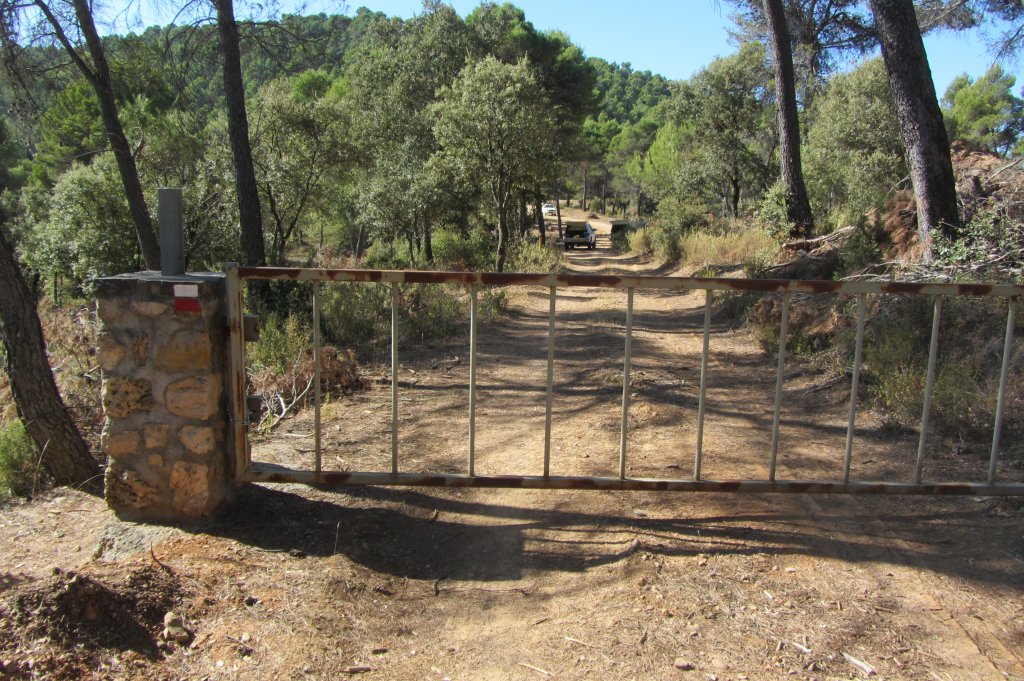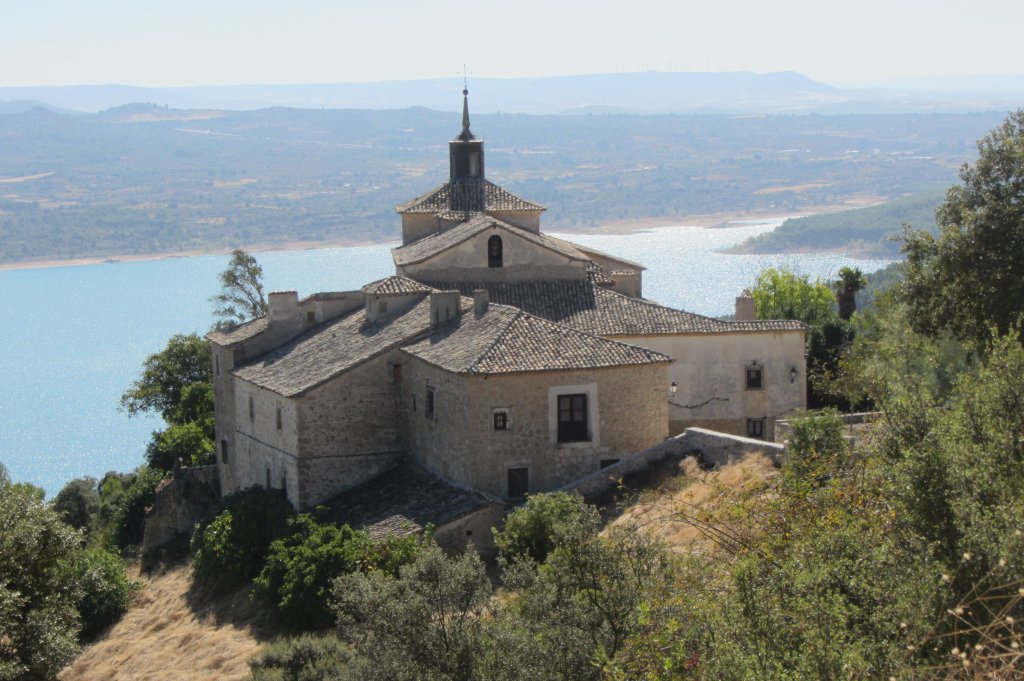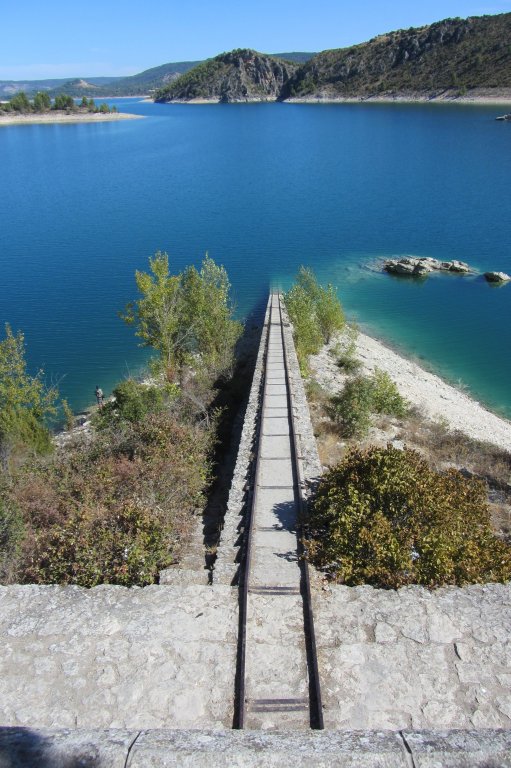Stage 12: Alocén - Sacedón
Description

Following the course of the river
This Stage begins at Alocén, a village that sits over the Entrepeñas Reservoir. Outdoor activities may be practiced in the surrounding area and along the route, blessed with a landscape dominated by river banks, olive groves, walnut trees, orchards and market gardens. The Trail runs along vehicle tracks and paths, alternating with a few paved roads, where caution should be exercised. The traveller can enjoy flatlands, cliffs, black pine, holm oak and kermes oak forests, as well as several 16th and 17th century shrines and churches.
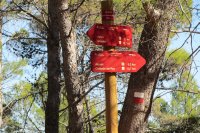
This Stage begins in the upper sector of the town of Alocén, a village on the banks of the Entrepeñas Reservoir. The Trail climbs down the GU-998 road until it reaches a bend where it turns left and runs into a metal gate. The gate remains unlocked, allowing the traveller free passage, but must be left closed as found.
From here, the Nature Trail continues a few kilometres along the road leading to the Escuela Provincial de Vela (Provincial Sailing School), until it reaches another metal gate, which can be passed through one of the sides.
The Trail continues its gradual ascent along the paved road, until it merges with the GU-999. Some one-hundred meters further, the road turns onto a forest track on the left that ventures into the forest. Black pines (Pinus nigra) flank the route along this stretch.
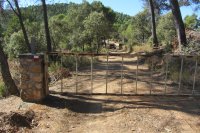
After an intense, yet short, climb, the Trail comes to an interStage where it turns right, then left to continue through the forest. Another fence blocks the way, but as on previous occasions, it can be sidestepped. Next to the fence, hanging from the branches, are wooden boxes used as nests.
Once through the gate, the path continues along a track next to some stone tables. Holm oaks (Quercus ilex) flank the route, forming a beautiful natural tunnel. The Stage reaches again the GU-999, along which it runs for several hundred metres. It arrives at a junction where it turns left onto the road leading to the town of Auñón.
After a couple of kilometres, it reaches a bend in the road, and the Trail continues along a vehicle track that ventures into a pine forest leading to a car park. The Sanctuary of the Virgen del Madroñal, built in the seventeenth century, can be found here. According to the legend, the shrine took its name from the appearance by the Virgin Mary on the trunk of a strawberry tree.
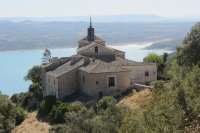
The Trail continues to the left of the Sanctuary, turning onto a path that climbs up through the pine forest. The path reaches, soon after, the top of the mountain, and begins to descend. The pine forest gradually gives way to large olive groves and kermes oak (Quercus coccifera) woods.
On reaching the paved road, the Trail turns left, climbing up towards the hamlet of Auñón, home to the 16th century church of San Juan Bautista.
The route leaves Auñón behind, and continues along a road that traverses through market gardens. It crosses a stream, and proceeds towards huge walnut (Juglans regia) farms.

Next to a few houses, the Trail merges with the N-320 for some fifty meters, where it turns onto a path to the right. The route advances through an area with many market gardens and olive groves, in a place known as Pinillas, until it reaches the CM-2009, where it crosses to the opposite side and over the Auñón Stream. From here, this Stage shares part of the route with Stage 13. On its way to the Entrepeñas Reservoir, the route always continue upstream, parallel to the River Tagus, first along the right bank, then on the left bank, after crossing a stone bridge over the river.
A rest area with benches and tables can be found near the reservoir, before turning right onto a paved road that runs along the edge of the body of water. The route continues along a paved road to a tunnel that provides access to the N-320. Just after the tunnel, the Trail is interrupted during approximately 450 m as it runs along the N-320. Stage 12 continues from here, where a paved road that passes under the N-320 intersects with the road to Cuenca, leading the traveller to Sacedón, the end point of this Stage. For safety reasons, it is advisable to use a vehicle in this Stage.
Sites of interest
Profile
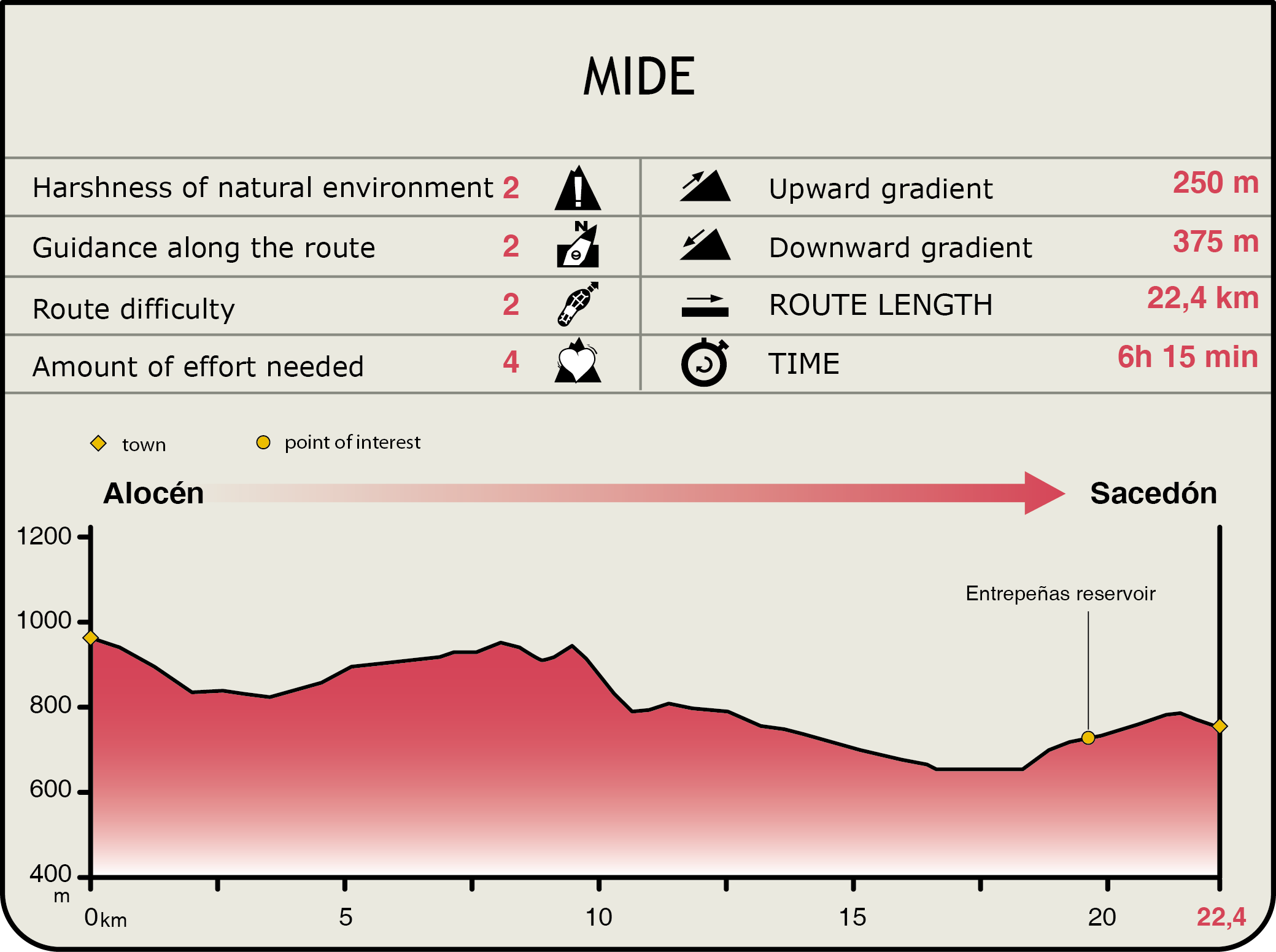
MIDE (Method for the Information of Excursions)
Featured
Further information
Nests or nest boxes
Nest boxes can be found hanging from the trees. Contrary to popular belief, these boxes are not cages. It is a proven fact that many forest birds, especially Chickadees and Blue Tits (Family Paridae), use them as breeding sites.
Strategically placed in the forests, it favours the presence birds, especially young ones, that feed on insects that usually feed on trees. This prevents the use of insecticides, which contaminate the environment, and enables the natural control of insects that could multiply into pest proportions.
There are different types of nest boxes. The most widespread are designed for small birds, but there are also larger boxed for bats or Tawny Owls (Strix aluco), which control small rodent populations.
